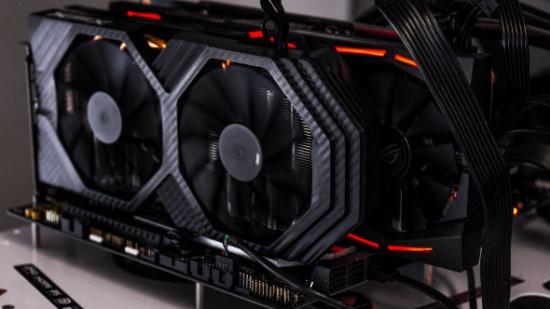If you want to create the fastest gaming PC in the world then you want to jam as many graphics cards as you can inside it, right? After all, if it’s good enough for Summit – the most powerful computer ever made, with its 27,648 Nvidia Volta GPUs, – then surely it’s good enough for your home gaming rig too.
But, outside of five figure PC builds for the spoilt rich kids of Mr. and Mrs. Moneybags there are very few multi-GPU PCs around. When the Steam Hardware Survey was still bothering to measure such things, the percentage of PC gamers using more than a single card was buried behind the decimal points of a big fat zero.
And if you want the best single GPU these are the best graphics cards around today.
So is there any life in the future of multi-GPU solutions or are both AMD’s CrossFire and Nvidia’s SLI relics of a long forgotten past? As ever, it’s a little bit from Box A and a little bit from Box B…
AMD’s CrossFire and Nvidia’s SLI are the bespoke technologies the two graphics card giants used to get their own GPUs playing nicely together in a single system. Originally both technologies demanded the use of a ribbon cable to connect the multiple graphics cards to each other, but while that is most assuredly still the case with Nvidia’s GeForce cards, AMD’s Radeon GPUs are now able to operate without such restrictions and communicate happily over the PCIe 3.0 interface.
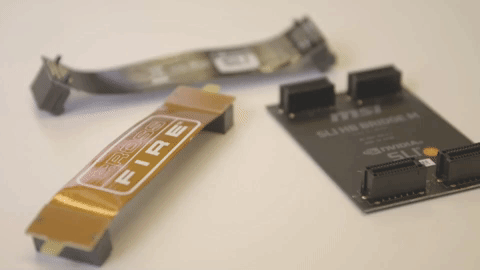
Nvidia’s SLI still requires the ribbon, and for its high-end cards you need the high-bandwidth SLI bridge connector to get the full benefit of the multi-GPU goodness.
The way the two technologies render game graphics is pretty consistent. They use either split frame rendering (SFR) or alternate frame rendering (AFR). The former means that the GPUs share the rendering of each frame between them, while the more common AFR method has each GPU taking it in turns to render a frame.
But Nvidia’s SLI is more restrictive in terms of what graphics cards you can use in a multi-GPU array. You need to have the exact same GPU plugged into each of the slots to get the Scalable Link Interface (for that is the full name of the acronymed beast) working. They can be from different manufacturers – Asus and Gigabyte cards can still work together – but they must use the same chip. A GTX 1070 needs another GTX 1070 to function.
On the CrossFire side (that’s just branding… move along) you can use different GPUs from the same generation of graphics card. So you can plug an RX 580 in alongside an RX 570, but please, for the love of Lisa Su, don’t do this. Sure, it is possible, but it’s generally more trouble than it’s worth. For an easy life you should only really CrossFire identical GPUs, a la Nvidia.
But then for an easy life you probably shouldn’t bother with either multi-GPU technologies.
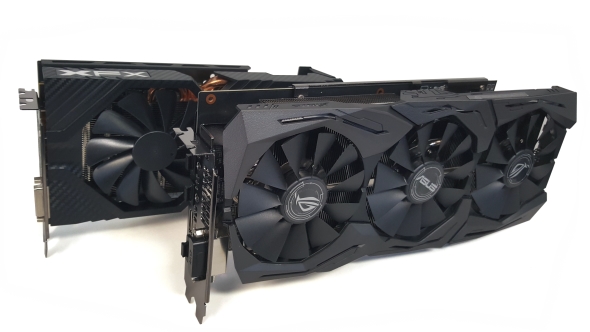
The potent promise of both SLI and CrossFire has been either to give you the absolute highest performance possible by taking multiple high-end graphics cards and making ludicrous-speed gaming rigs, or to give you a genuine value proposition. Pick up a single, affordable mainstream GPU and then six months to a year down the line buy another one – possibly for less than the price of your first one – and net the same level of performance you’d get from a more expensive high-end graphics card.
But it’s never really worked out that way. SLI and CrossFire have long been technologies offering diminishing returns on your investment. It’s very rare to get double the gaming performance from adding a second GPU, and the performance boost gets noticeably smaller the more graphics cards get added into an array.
And that’s if a game developer even bothers to implement SLI or CrossFire support. This is the biggest issue facing multi-GPU technologies and arguably the reason for it decline, and potentially imminent death, on the gaming front. The onus of support lies with game developers spending time, and therefore a great deal of money, on getting their games working with Nvidia and AMD’s multi-GPU technologies.
“We are considering how much investment we put into it,” AMD’s Scott Herkelman told us, “but it’s not necessarily because we as gamers and enthusiasts of the PC platform don’t care about it, it’s the amount of investment the ISVs, the game developers have to put into it.”
With the cost of game development rising, and the number of gamers such SLI and CrossFire efforts would benefit, it’s difficult for either AMD or Nvidia to be able to encourage the devs to take an active interest. Interest is definitely waning on the mainstream side for Nvidia, with it nixing support for SLI on its most popular cards, the GTX 1060, leaving only its higher-end cards available to pair up for ultra-expensive, showpiece machines.
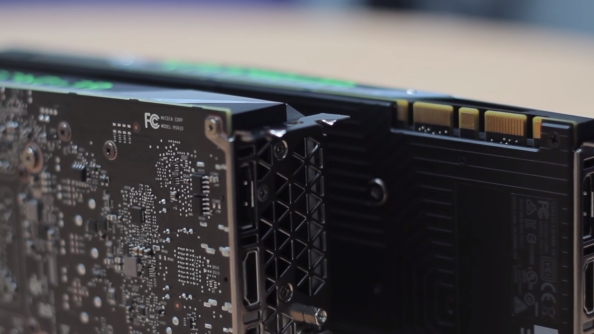
AMD seems to be sidelining its CrossFire tech, but in favour of DirectX 12’s API-based multi-GPU support. Having a specific multi-GPU abstraction layer built into DX12 means that it should be more straight-forward for devs to support more than one graphics card in a single PC.
“Our balance will probably end up that new APIs get multi-GPU support,” Herkelman told us, “and older APIs, because of a lack of return on investment, and that most new games are coming out on the new API platforms, that will probably have to suffer a little bit.”
And AMD have proved it can work – it’s RX 580s, when paired up, are able to deliver the same level of gaming performance as the top-end RX Vega 64. That means they’re often able to offer twice the gaming frame rates of a single RX 580 – the holy grail of multi-GPU gaming.
But that’s only in the games which explicitly offer DX12 mGPU support, such as Deus Ex: Mankind Divided, Rise of the Tomb Raider, and Hitman. There still aren’t a whole load of games actually using DirectX 12, and few of those deliberately implementing the mGPU abstraction layer.
When we’re talking about “modern APIs,” however, Vulkan is a little less compliant. When testing the same RX 580s with Doom in its Vulkan habitat we were actually getting poorer gaming frame rates from two cards than just a single one.
Sadly, even though not necessarily reliant on SLI, DirectX 12’s mGPU still doesn’t let you plumb two GTX 1060 cards into the same PC to get moar framez.
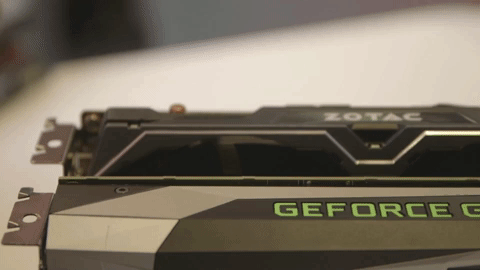
So, with both Nvidia and AMD seemingly pulling back from explicit SLI and CrossFire support, it does look like the days of their bespoke multi-GPU technologies are indeed numbered. On the gaming side anyways… When you’re talking about compute, that’s a lot easier for multiple GPUs to deal with than rendering game frames.
That’s why the miners bought so many GPUs, and why it’s almost a moot point even talking about multi-GPU gaming in the face of one of the biggest graphics cards droughts I’ve ever witnessed in all my long years being a hardware journo. The scarcity and pricing of graphics cards has made it almost impossible picking up a single affordable GPU, let alone two of the damned things.
But, in the end, it’s AMD that looks in a better position, or has at least put its Radeon gamers in a better position, if they want to double up on their graphics cards. You can get a pair of mainstream Radeons to play nice and deliver massively improved frame rates in a decent number of modern games, though whether that will remain the case all depends on the devs.
